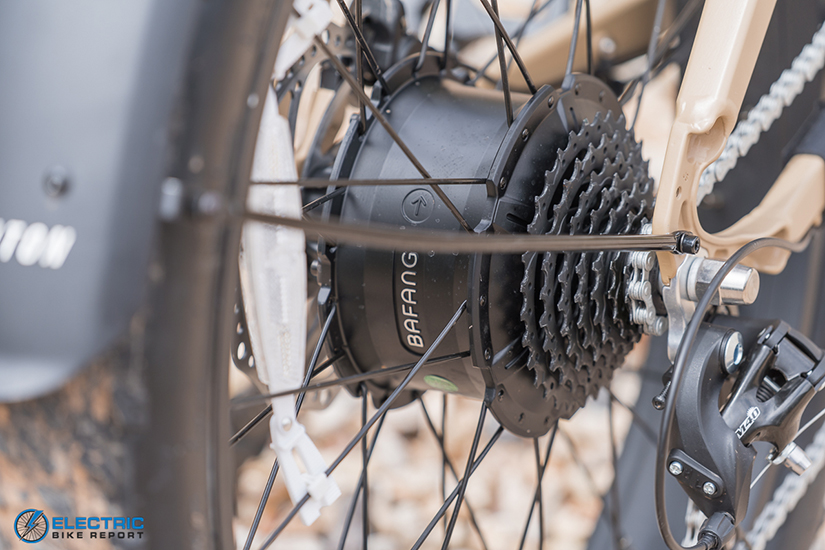Have you ever wondered how electric bikes work and what makes them different from regular bikes? In this article, we will take a closer look at the heart of electric bikes – the electric bike hub motors. By understanding their design, advantages, and best uses, you will gain valuable insights into the world of electric bike motors. Whether you are a cycling enthusiast or simply curious about this innovative technology, this article will provide you with a comprehensive introduction to electric bike hub motors. So, let’s dive in and explore the exciting world of electric bikes!
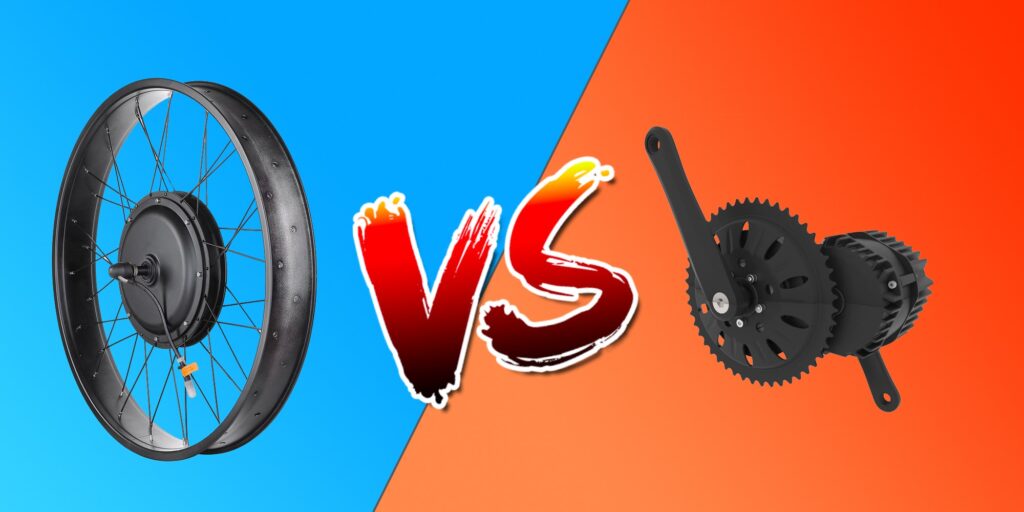
Types of Electric Bike Motors
When it comes to electric bikes, the type of motor used plays a crucial role in determining their performance and functionality. There are several types of electric bike motors available, each with its own unique characteristics and benefits. Understanding the differences between these types is essential for choosing the right motor for your e-bike.
Hub Motors
Hub motors are one of the most common types of electric bike motors in use today. These motors are located in the center of the wheel and provide direct power to the wheel itself. Hub motors can be further categorized into two subtypes: internal and external.
Mid-Drive Motors
Unlike hub motors, which are integrated into the wheel, mid-drive motors are located near the bike’s pedals. This positioning allows the motor to transfer power to the drivetrain directly, resulting in a more efficient use of energy. Mid-drive motors are known for their excellent torque and ability to handle steep inclines.
Direct Drive Motors
Direct drive motors, as the name suggests, provide a direct connection between the motor and the wheel. These motors offer high levels of torque and are favored for their simplicity and durability. However, they tend to be heavier and less efficient than other types of motors.
Geared Motors
Geared motors utilize a system of gears to increase torque and reduce the load on the motor. These motors are known for their efficiency and suitability for urban riding. They provide a good balance of power and speed, making them popular for commuting and recreational riding.
Understanding Hub Motors
Among the different types of electric bike motors, hub motors are widely used and offer several advantages. Let’s take a closer look at how hub motors work, the different variations available, and their pros and cons.
Definition and Function
Hub motors are electric motors that are mounted inside the wheel hub. They provide direct power to the wheel, eliminating the need for a separate drivetrain or chain. Hub motors can be either front-wheel drive or rear-wheel drive, depending on their placement on the bike.
Internal vs. External Hub Motors
Internal hub motors are fully enclosed within the wheel hub, offering a sleek and streamlined appearance. On the other hand, external hub motors have the motor positioned outside the wheel hub, allowing for easier servicing and maintenance. Both variations have their own advantages and considerations.
Pros and Cons of Hub Motors
Hub motors have several advantages that make them a popular choice for electric bikes. They offer simplified design and installation, increased durability and reliability compared to other motor types, and quiet and smooth operation. Hub motors also have regenerative braking capability, allowing the bike to recover and store energy when braking. Additionally, these motors have low maintenance requirements.
However, hub motors do have their limitations. They can add significant weight to the bike due to their placement in the wheels, which can affect maneuverability. Hub motors also have limitations in terms of power and torque compared to mid-drive motors. Understanding these pros and cons is crucial for determining if a hub motor is the right choice for your electric bike.
Advantages of Electric Bike Hub Motors
Now that we have a better understanding of hub motors, let’s explore their advantages in more detail. These advantages make hub motors an appealing choice for a variety of electric bike applications.
Simplified Design and Installation
One of the key advantages of hub motors is their simplified design and installation process. With the motor integrated directly into the wheel, there’s no need for additional drivetrain components such as chains, gears, or derailleur systems. This streamlined design not only reduces maintenance needs but also makes it easier to convert regular bikes into electric ones.
Increased Durability and Reliability
Hub motors are known for their durability and reliability. Since they are sealed within the wheel hub, they are protected from the elements, such as dust, dirt, and water. This enclosure offers a higher level of protection compared to mid-drive motors, which are exposed to external factors. Hub motors are less prone to mechanical issues and require minimal maintenance.
Quiet and Smooth Operation
Another notable advantage of hub motors is their quiet and smooth operation. These motors produce very little noise or vibration, providing a comfortable riding experience. This is especially beneficial for those who enjoy a peaceful commute or prefer a more serene riding experience in general.
Regenerative Braking Capability
Regenerative braking is a feature that allows electric bikes with hub motors to recover and store energy when braking. As the wheels slow down, the motor acts as a generator, converting the kinetic energy into electrical energy that can be stored in the battery. This feature increases the overall efficiency of the electric bike and can extend the range of the battery.
Low Maintenance Requirements
Hub motors have low maintenance requirements compared to other motor types. Since they have fewer moving parts and are sealed within the wheel hub, there is less exposure to wear and tear. This means less frequent maintenance and fewer chances of mechanical failures. Hub motors are a reliable choice for those looking for an electric bike with minimal maintenance needs.
Best Uses for Electric Bike Hub Motors
Now that we’ve explored the advantages of hub motors, let’s take a look at the best applications for electric bikes equipped with hub motors. Understanding these best uses can help you determine if a hub motor is the right choice for your specific needs.
City Commuting
Hub motors are well-suited for city commuting due to their simplicity and ease of use. The quiet operation and smooth acceleration make them perfect for navigating traffic and crowded streets. They provide a comfortable and efficient ride, especially in urban environments where stop-and-go traffic is common.
Hilly or Mountainous Terrains
If you live in an area with hilly or mountainous terrains, a hub motor can be an excellent choice. Hub motors provide sufficient torque to tackle steep inclines and maintain a steady speed. The direct power transfer to the wheels ensures that you can conquer challenging terrains with ease.
Cargo or Utility Bikes
For those using electric bikes for cargo or utility purposes, hub motors offer distinct advantages. Their rugged construction and low maintenance requirements make them suitable for carrying heavy loads and withstanding the strains of regular use. The regenerative braking feature is also beneficial when hauling heavier cargo.
Casual or Recreational Riding
If you enjoy casual or recreational riding, a hub motor can enhance your experience. The smooth acceleration and quiet operation provide a more enjoyable and relaxing ride. Whether you want to explore scenic routes or leisurely cruise around your neighborhood, a hub motor-equipped electric bike can be a fantastic choice.
Commuting in Traffic
Commuting in heavy traffic can be stressful, but a hub motor-equipped electric bike can make the experience more manageable. The quiet operation allows you to navigate the streets without making excessive noise, and the torque provided by the motor ensures quick acceleration when needed. Hub motors offer a convenient and efficient way to commute in congested areas.
Electric Bike Conversions
If you already have a regular bike and want to convert it into an electric bike, a hub motor conversion kit can be a great option. Hub motors allow for relatively easy installation, and the conversion process is straightforward compared to other motor types. Converting your bike with a hub motor can give you the benefits of an electric bike without having to purchase a new one.
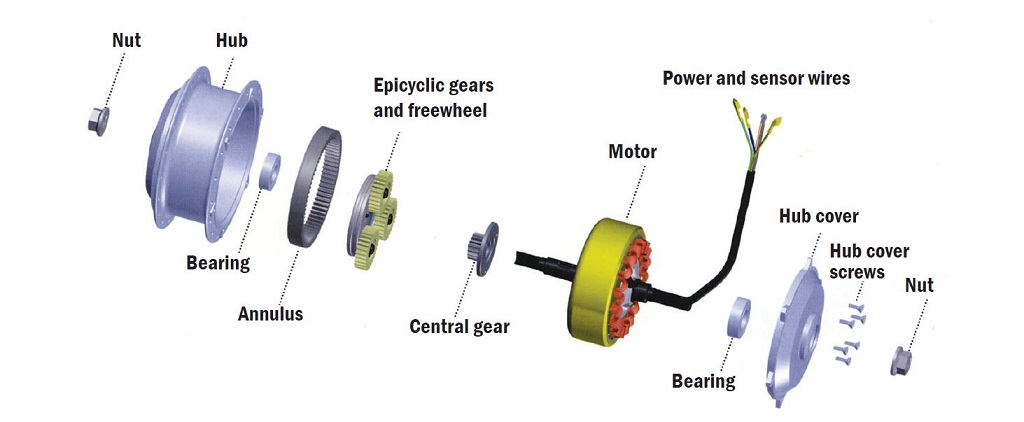
Factors to Consider when Choosing a Hub Motor
When selecting a hub motor for your electric bike, there are several important factors to consider. Taking these factors into account will ensure that you choose a motor that meets your specific requirements and maximizes your riding experience.
Power and Torque
The power and torque output of a hub motor are essential considerations. The power rating determines the overall performance of the motor, with higher power ratings providing more acceleration and speed. Torque is the measure of rotational force, and a higher torque rating allows for better hill-climbing abilities.
Weight and Size
The weight and size of the hub motor can affect the overall weight distribution and handling of the electric bike. While a larger motor may offer more power, it can also make the bike feel heavier and less maneuverable. Consider the weight and size of the motor in relation to your riding preferences and the type of terrain you’ll be traversing.
Motor Placement
Hub motors can be installed in either the front or rear wheel, and the placement can affect the handling and performance of the electric bike. Front hub motors tend to provide better balance and traction, while rear hub motors offer better hill-climbing abilities. Consider your riding style and preferences when choosing the motor placement.
Battery Compatibility
Hub motors require batteries to provide the necessary power. Ensure that the hub motor you choose is compatible with the battery system you have or plan to use. Consider factors such as voltage, capacity, and compatibility with the motor controller to ensure seamless integration and optimal performance.
Support and Service
When investing in an electric bike with a hub motor, it’s important to consider the support and service available for the motor. Look for reputable manufacturers that offer reliable customer support and warranties. Having access to service centers and spare parts can ensure a smooth ownership experience and minimize downtime in case of any issues.
Price and Budget
Lastly, consider your budget and the price range of hub motors. While cheaper options may be tempting, it’s important to balance cost with quality and performance. Higher-priced motors often offer better reliability and performance but may not be necessary for all applications. Evaluate your needs and budget to find a hub motor that offers the best value for your money.
Important Design Considerations for Hub Motors
Choosing the right hub motor involves considering various design aspects that can impact performance and overall usage. Let’s take a closer look at some key design considerations to keep in mind when selecting a hub motor for your electric bike.
Hub Motor Size and Weight
The size and weight of the hub motor can have a significant impact on the overall handling and maneuverability of the electric bike. While a larger motor may offer more power, it can also make the bike feel heavier and potentially affect its balance. Consider your riding preferences and the specific requirements of your intended use to determine the ideal size and weight of the hub motor.
Voltage and Power Ratings
The voltage and power ratings of the hub motor determine its overall performance capabilities. Higher voltage and power ratings generally result in better acceleration and top speeds. However, it’s crucial to balance these ratings with the capacity of your battery system and the intended use of the electric bike. Consider factors such as terrain, load capacity, and riding preferences to determine the appropriate voltage and power ratings for your hub motor.
Wheel Compatibility
Another important design consideration for hub motors is wheel compatibility. Hub motors are available in different sizes to match different wheel diameters. Ensure that the hub motor you choose is compatible with the specific size of your wheel to ensure proper fit and optimal performance. Mismatched sizes can lead to handling issues, decreased efficiency, and potential safety hazards.
Motor Efficiency
Efficiency is a critical factor when selecting a hub motor for your electric bike. An efficient motor will help maximize the range of your electric bike and optimize battery usage. Look for hub motors with high efficiency ratings to ensure that you get the most out of your electric bike’s battery system. A more efficient motor can also result in a longer lifespan and reduced operating costs in the long run.
Thermal Management
Hub motors generate heat during operation, and effective thermal management is crucial to ensure optimal performance and prevent overheating. Look for hub motors that incorporate features such as built-in cooling systems or heat dissipation components to ensure reliable and efficient operation. Proper thermal management can prolong the lifespan of the motor and prevent thermal damage to other components.
Integration with Electric Bike Components
Consider the integration capabilities of the hub motor with other electric bike components. Ensure that the motor is compatible with the battery system, motor controller, and any other electrical components you plan to use. Compatibility can help ensure smooth operation and minimize the likelihood of compatibility issues or performance limitations.
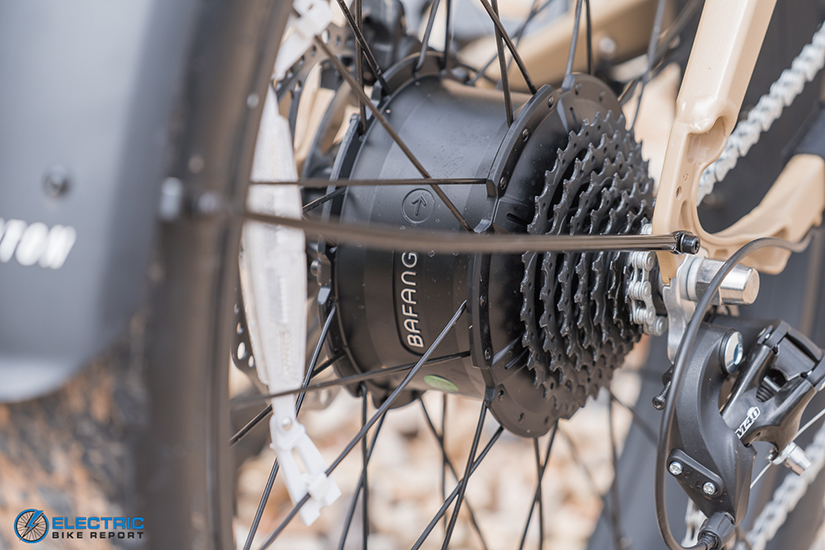
Comparing Hub Motors to Other Motor Types
While hub motors have their own advantages, it’s essential to compare them to other motor types to determine the best option for your electric bike. Let’s take a brief look at how hub motors fare when compared to mid-drive motors, direct-drive motors, and geared motors.
Mid-Drive Motors vs. Hub Motors
Mid-drive motors provide power directly to the drivetrain, resulting in a more efficient use of energy and better hill-climbing abilities. They have excellent torque and are well-suited for more demanding terrains. On the other hand, hub motors offer simplified design, low maintenance requirements, and a quieter operation. They are better suited for city commuting and flat terrains. Consider your specific needs and riding preferences to determine whether a mid-drive motor or a hub motor is the better choice for you.
Direct Drive Motors vs. Hub Motors
Direct-drive motors provide a direct connection between the motor and the wheel, resulting in high torque and durability. They offer simplicity and are known for their reliability. However, direct-drive motors tend to be heavier and less efficient compared to hub motors. Hub motors provide a more compact design, quieter operation, and regenerative braking capability. Consider factors such as weight, efficiency, and noise levels when deciding between a direct-drive motor and a hub motor.
Geared Motors vs. Hub Motors
Geared motors utilize a system of gears to increase torque while reducing the load on the motor. They offer excellent efficiency and are well-suited for urban riding and moderate terrains. Geared motors provide a good balance of power and speed. Hub motors, on the other hand, offer a simpler design and lower maintenance requirements. They are quieter and provide a smoother ride. Consider the specific requirements of your riding style and terrain to determine whether a geared motor or a hub motor is the better fit for your electric bike.
Market Trends in Electric Bike Hub Motors
As electric bikes continue to gain popularity, hub motors have seen significant advancements and an increasing market demand. Let’s examine some of the key market trends surrounding hub motors.
Increasing Popularity of Hub Motors
Hub motors have experienced a surge in popularity in recent years, primarily due to their ease of use and low maintenance requirements. They offer a simple and reliable solution for electric bike propulsion, making them accessible for riders of all skill levels. The growing popularity of electric bikes for commuting and recreational purposes has contributed to increased demand for hub motors.
Advancements in Hub Motor Technology
Advancements in technology have led to significant improvements in hub motor performance and efficiency. Manufacturers are continuously developing more powerful and lightweight hub motors, resulting in better acceleration and increased range. These advancements have made hub motors a viable option for various applications, from city commuting to off-road adventures.
Availability of High-Torque Hub Motors
High-torque hub motors have become more readily available in the market, catering to riders who require extra power for tackling steep inclines or carrying heavier loads. These motors provide the necessary torque to handle challenging terrains without compromising on the advantages offered by hub motors, such as simplified design and low maintenance requirements.
Integration of Smart Features in Hub Motors
With the rise of smart technology, hub motor manufacturers have started incorporating intelligent features into their products. These features can include smartphone connectivity, integrated sensors, and customizable power settings. Smart hub motors allow riders to monitor and adjust their e-bike performance, enhancing the overall riding experience and ensuring optimal battery usage.
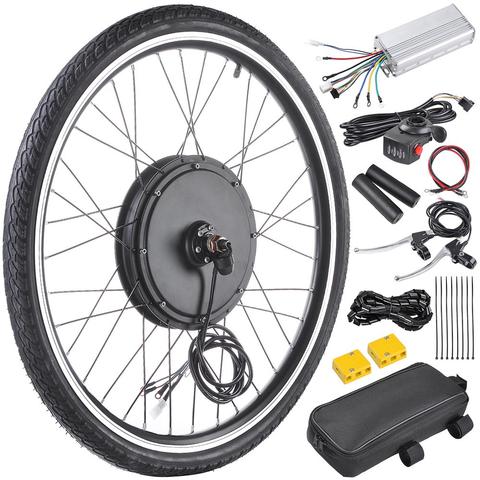
Tips for Using Electric Bike Hub Motors Efficiently
To get the most out of your electric bike equipped with a hub motor, here are some helpful tips to ensure efficient usage:
Understanding Power Settings
Familiarize yourself with the power settings available on your electric bike. Adjusting the power settings can help you conserve battery life when needed or provide an extra boost for challenging terrains. Experiment with different power settings to find the right balance between performance and battery usage.
Efficient Battery Management
Proper battery management is crucial for maximizing the range of your electric bike. Ensure that you fully charge the battery before each ride and regularly monitor the battery level to avoid discharging it completely. Avoid exposing the battery to extreme temperatures, as this can affect its performance and lifespan.
Proper Gear Shifting
Using the appropriate gear shifting technique can help optimize the performance of your electric bike. Adjusting gears properly can ensure that the hub motor operates within its optimal RPM range, improving efficiency and extending battery life. Take the time to learn how to shift gears smoothly and efficiently for the best riding experience.
Regenerative Braking Techniques
Take advantage of the regenerative braking capability of your hub motor to recover and store energy when braking. When approaching a stop, gradually apply the brakes instead of using sudden, aggressive braking. This allows the hub motor to convert the kinetic energy into electrical energy, reducing the strain on the battery and potentially extending its range.
Conclusion
Electric bike hub motors offer numerous advantages, making them a popular choice for a wide range of applications. Their simplified design, increased durability and reliability, quiet operation, and regenerative braking capability make them an appealing option for city commuting, hilly terrains, and cargo or utility bikes, among others. Understanding the factors to consider when choosing a hub motor, as well as the design considerations and comparisons to other motor types, is essential for making an informed decision.
As market trends continue to drive advancements in hub motor technology, riders can expect to see more powerful and efficient hub motors with integrated smart features. By following efficient usage tips such as understanding power settings, managing the battery properly, and utilizing regenerative braking techniques, riders can further enhance their electric bike experience.
Whether you’re a city commuter or a recreational rider, investing in an electric bike with a hub motor can greatly enhance your overall riding experience. Enjoy the benefits of simplified design, increased durability, and a smooth and quiet ride with an electric bike equipped with a hub motor.

